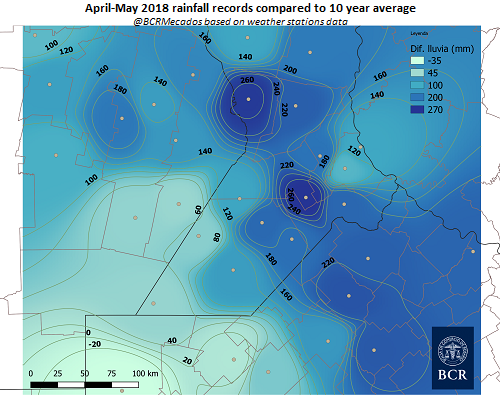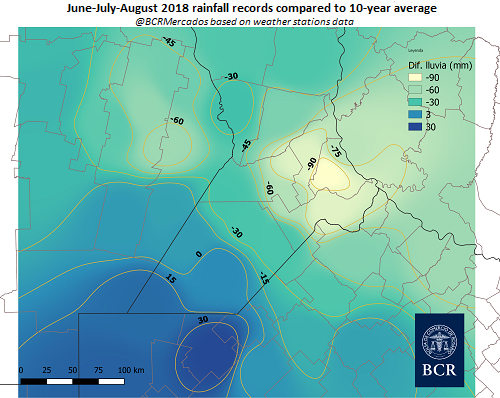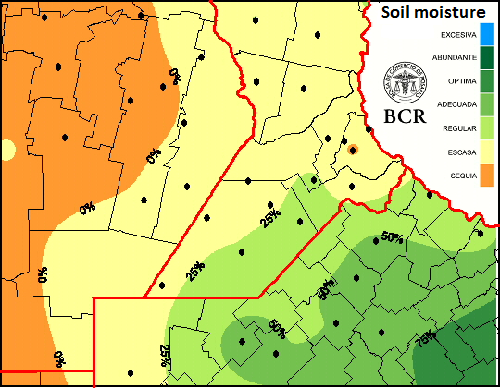Rainfall in Argentina was rather erratic in 2018. What should we expect for the remaining months of the year?
SOFÍA CORINA
Rainfall distribution this year differs significantly with historical averages. In order to measure this phenomenon, we analyze Rosario Board of Trade's rainfall records from the past 10 years provided by weather stations located in Argentina's core productive area. From this study, we were able to distinguish three different periods this year: 1) January-February-March period: remarkably dry if compared to average, marked the worst drought in 50 years in Argentina. It caused a 19.5 MT soybean loss and a 9.5 MT corn loss if compared to the initial Rosario Board of Trade's estimates. 2) April-May period: more humid if compared to the 10-year average. These beneficial conditions allowed the sowing of winter crops and helped to keep them in good conditions to the present. Then, cool weather favor tilling. The map shows 2018 rainfall levels compared with the past 10-year average. Areas in dark blue received double the average rainfall this year, while in the southwest region, April-May accumulated precipitations were slightly lower. Current year's rainfall in the core productive area was, in average, 94% above the 10-year average.
3) June-July-August period: drier than average. The lack of water cut yields expectations, and although they remained lower than last year's levels, the crops were able to maintain a good condition thanks to soil's water reserves resulting from the mentioned rainfalls in April and May. The map shows 2018's rainfall records compared to 10-year average. Some areas in Cordoba province (northwest in the map) presented rainfalls 80% lower than average this year. This fact, combined with the area's characteristic sandy soils that retain less water, started a drought alert in the region. The southeast of Santa Fe province was another dry focus, the area presented 70% less rainfall than the average.
September 2018 September started with a water deficit and failed rainfall forecasts that limited corn early sowing and generated concerns around wheat final yields. Fortunately, on 9/18, generalized rains favored the most needed areas. Although these precipitations are not enough to reverse the past 3 months' water deficit, they benefited wheat and corn crops. Forecasts call for further rainfall in coming days. The following map shows current soil moisture in Argentina's core productive areas (provinces of Buenos Aires, Santa Fe and Córdoba).


